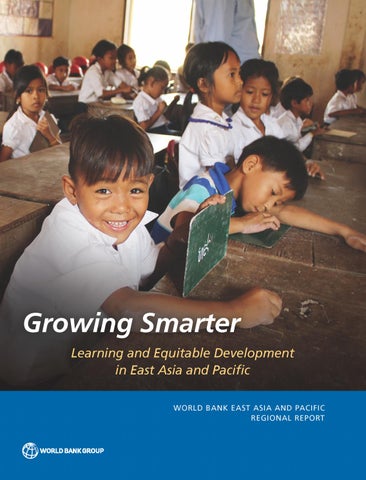In education, SLO stands for Student Learning Objective, which is a measurable goal set by a teacher to assess student progress. Student Learning Objectives, commonly known as SLOs, are performance targets that educators set for their students to measure learning outcomes.
These goals are specific and measurable, allowing teachers to evaluate student progress and adjust instruction accordingly. SLOs help educators and administrators track student learning, identify areas of improvement, and make informed decisions about instruction and curriculum. By setting SLOs, teachers can focus on specific learning outcomes and tailor their teaching methods to meet the needs of individual students.
This ensures that education is targeted and effective, promoting student growth and achievement.
Understanding Student Learning Outcomes (slos)
Student Learning Outcomes (SLOs) are a crucial part of education as they assess the progress and achievement of students. SLOs provide a clear understanding of what students should be able to know and do by the end of a course or program. By delineating specific learning objectives, SLOs enable educators to design effective curriculum and instructional strategies.
Implementing SLOs has several benefits:
- Improved student performance: SLOs encourage educators to focus on essential knowledge and skills, leading to better student outcomes.
- Enhanced teaching effectiveness: SLOs help educators align their teaching methods, materials, and assessments with the desired learning outcomes.
- Data-driven decision-making: SLOs provide educators with valuable data that can be used to evaluate instructional practices, identify areas of improvement, and make informed educational decisions.
- Accountability: SLOs promote accountability by setting clear expectations and enabling educators to demonstrate the effectiveness of their teaching.
- Continuous improvement: Regularly reviewing and revising SLOs allows educators and institutions to adapt and improve educational programs over time.
Overall, incorporating SLOs into educational practices enhances student learning, instructional quality, and institutional effectiveness.
Defining Student Learning Outcomes
htmlStudent Learning Outcomes (SLOs) are measurable statements that define what knowledge, skills, abilities, and competencies students are expected to possess at the end of a course or program. They provide clarity and direction for both educators and students by outlining the specific learning objectives that need to be achieved.
It’s important to distinguish SLOs from course objectives. SLOs focus on overarching outcomes that apply to the entirety of a course or program, whereas course objectives are specific and actionable, outlining the content and activities that students will engage with. Course objectives help in achieving SLOs, but they are not the same.
SLOs are developed by educators through a systematic process that involves analyzing the course or program’s goals, determining the essential skills and knowledge students should acquire, and then crafting measurable statements that express those outcomes. SLOs are typically derived from disciplinary standards, accreditation requirements, and the needs of the learners.
The Components Of Effective Slos
Clear and measurable language is a crucial component of effective Student Learning Objectives (SLOs) in education. By using explicit and precise wording, educators ensure that the SLOs accurately represent the intended learning outcomes for students. It is important to align SLOs with standards and curriculum to guarantee that the objectives are relevant and in line with the educational requirements. By doing so, educators ensure that the SLOs are meaningful and applicable to the students’ overall educational journey.
Moreover, SLOs should have relehttps://token.dev/cms/seo-servicesvant and attainable goals. Setting goals that are too ambitious or vague can lead to frustration for both students and educators. By ensuring that the goals are reasonable and achievable, educators provide the students with a sense of accomplishment and motivation throughout the learning process.
Implementing Slos In The Classroom
SLOs as a Framework for Instructional Design: Implementing Student Learning Objectives (SLOs) in the classroom can serve as a powerful framework for instructional design. SLOs provide educators with a clear roadmap for planning and delivering instruction. By setting specific, measurable, achievable, relevant, and time-bound goals for student learning, teachers can align their instruction with desired outcomes.
Strategies for Communicating SLOs to Students: To effectively communicate SLOs to students, teachers can use various strategies. One approach is to explicitly share the SLOs with students at the beginning of a unit or lesson, ensuring they understand the learning objectives and how they will be assessed. Teachers can also break down the SLOs into smaller, manageable parts and provide regular updates on student progress towards meeting those objectives. Engaging students in setting their own learning goals can further enhance their understanding and ownership of the SLOs.
| Integrating SLOs into Assessment Practices: |
|---|
| SLOs can be seamlessly integrated into assessment practices. Teachers can design formative assessments that align with the SLOs, providing ongoing feedback to students on their progress towards meeting those objectives. Summative assessments can be structured to assess overall student achievement of the SLOs. By aligning assessments with the SLOs, teachers can ensure that they are accurately measuring student learning and gathering evidence to inform instructional decisions. Regularly reviewing assessment data can also help teachers identify areas of strength and areas that need additional support. |
Assessing Slos: Methods And Tools
Varied assessment methods are utilized to measure Student Learning Outcomes (SLOs) in education. One commonly employed approach is using rubrics to assess SLO achievement. Rubrics provide a clear framework for evaluating student performance, enabling instructors to identify strengths and weaknesses in learning outcomes.
Data collection and analysis form another crucial aspect of assessing SLOs. By systematically gathering data on student performance, instructors can drive continuous improvement in education. Various tools and techniques such as surveys, quizzes, exams, and assignments aid in data collection. The collected data is then carefully analyzed, highlighting areas of success and areas needing improvement.
Slos In Action: Real-life Examples
Implementing Student Learning Objectives (SLOs) in education has proven to be highly effective in improving student achievement. Real-life examples from various schools highlight the impact of SLOs on student growth and success.
Case studies of schools that have successfully implemented SLOs showcase their inspiring success stories and valuable lessons learned. These examples serve as testament to the power of setting targeted learning objectives to drive instructional improvement and student engagement.
| Success Stories | Lessons Learned |
|---|---|
| 1. A school in district X witnessed a significant increase in student performance after implementing SLOs. | 1. Effective planning and collaboration between teachers and administrators are essential for implementing SLOs successfully. |
| 2. School Y saw a reduction in achievement gaps among student subgroups through the use of SLOs. | 2. Regular monitoring and data analysis are crucial to adjust instruction and intervene when necessary. |
The impact of SLOs on student achievement cannot be overstated. Research consistently demonstrates a positive correlation between the implementation of SLOs and improved academic outcomes. By setting clear, measurable, and attainable goals, SLOs provide students and teachers with a roadmap for success, fostering a culture of continuous improvement in the educational setting.
Challenges And Solutions In Slo Implementation
Overcoming resistance and obstacles is a crucial step in successfully implementing Student Learning Objectives (SLOs) in education. When introducing SLOs, it is common to face resistance from teachers and staff who may be hesitant to change their established teaching practices. To address this, providing clear communication about the benefits of SLOs and offering support and training can help alleviate concerns and build buy-in.
Collaboration with stakeholders is another essential strategy for successful SLO implementation. Involving teachers, administrators, and parents in the development and monitoring of SLOs can create a sense of ownership and ensure that goals align with overall educational objectives. Regular meetings and open lines of communication can foster a collaborative approach to SLO implementation.
Addressing the limitations of SLOs is also crucial. Recognizing that SLOs may not capture the full scope of student learning and growth, integrating other assessment methods and data sources is essential. It is important to use a variety of measures, such as standardized tests, teacher observations, and student portfolios, to provide a comprehensive view of student progress and achievement.

Credit: www.calpoly.edu
Continuous Improvement Through Slos
Continuous Improvement through SLOs is an essential component of improving educational practices. Using SLO data to inform instructional practices allows educators to make data-driven decisions that positively impact student learning. Setting new goals and revising SLOs are crucial steps in this process. By regularly assessing student performance and analyzing SLO data, educators can identify areas of improvement and create targeted strategies to address student needs. This iterative process fosters a culture of continuous learning, where teachers constantly strive to enhance their instructional practices. By monitoring progress and adjusting goals as needed, educators can ensure that they are meeting the unique needs of their students. Incorporating SLOs into the educational framework provides a valuable tool for educators to measure growth, tailor instruction, and ultimately, enhance student outcomes.
Frequently Asked Questions On What Is Slo In Education
What Is A Slo In Education Example?
An example of a student learning objective (SLO) in education is: “By the end of the school year, 90% of third-grade students will be able to read and comprehend grade-level texts independently. ” SLOs are measurable goals that outline what students should know and be able to do by a certain timeframe.
What Is The Slo Method Of Teaching?
The SLO method of teaching is an approach that focuses on setting specific learning objectives for students. These objectives help guide the teaching process and measure student progress. By clearly defining what students should be able to learn and do, the SLO method promotes effective instruction and assessment.
What Are The Three Parts Of An Slo?
An SLO consists of three main parts: the service level target, the metric used to measure the target, and the specific time period in which the target is measured. Each part plays a crucial role in determining the performance and reliability of a service.
What Does Slo Test Mean?
The SLO test refers to the Service Level Objective test. It measures the performance and availability of a service, helping determine if it meets the agreed-upon standards.
Conclusion
To wrap it up, understanding the concept of Slo in education is crucial for both teachers and students alike. Implementing this method can enhance the learning experience by providing valuable insights on student progress and aligning instruction accordingly. By regularly monitoring and assessing student growth, educators can tailor their teaching strategies to meet individual needs, fostering a more inclusive and effective learning environment.
So, stay informed and embrace the power of Slo in education for better educational outcomes.







